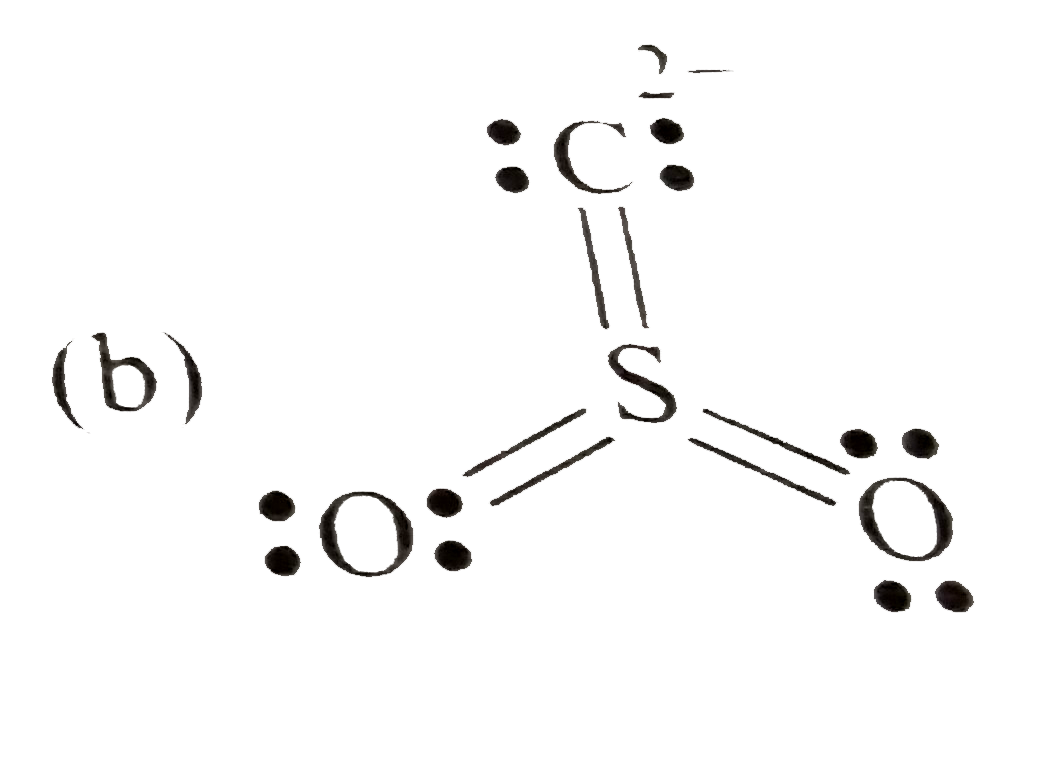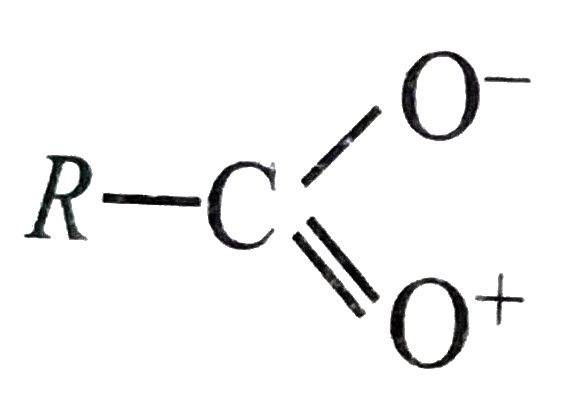The possible structure (s) of monnthio-carbonate ion is :




The correct Answer is:D
To determine the possible structures of the monothio-carbonate ion (which contains one sulfur atom in place of one oxygen atom in the carbonate ion), we will analyze the resonance structures and their stability.
1. Identify the Composition of Monothio-Carbonate Ion:
The monothio-carbonate ion consists of one carbon atom (C), one sulfur atom (S), and three oxygen atoms (O). The general formula can be represented as CSO2−3.
2. Draw Possible Lewis Structures:
We can draw several resonance structures for the monothio-carbonate ion. The structures will involve different placements of double bonds and negative charges among the atoms.
- Structure A: One double bond between carbon and one oxygen, with the other two oxygens carrying negative charges.
- Structure B: A double bond between carbon and sulfur, with one oxygen carrying a negative charge.
- Structure C: A double bond between carbon and sulfur, with two oxygens carrying negative charges.
- Structure D: A double bond between carbon and one oxygen, with the sulfur atom carrying a negative charge.
3. Evaluate Stability of Each Structure:
- Structure A: Has a negative charge on oxygen, which is stable because oxygen is more electronegative.
- Structure B: Has a double bond with sulfur and a negative charge on oxygen. Sulfur can accommodate more electrons due to its larger size, but the double bond with carbon may not be as stable.
- Structure C: Contains two negative charges on oxygen, which is less stable due to the high electron density on oxygen.
- Structure D: This structure has a double bond between carbon and oxygen, with sulfur carrying a negative charge. This is less stable due to the larger size of sulfur and the unfavorable charge distribution.
4. Determine the Most Stable Structure:
After evaluating the stability of each structure, we conclude that Structure A is the most stable because it places the negative charge on the more electronegative oxygen atoms, leading to a more favorable charge distribution.
Final Answer:
The most stable structure of the monothio-carbonate ion is the one with a double bond between carbon and one oxygen, while the other two oxygens carry negative charges.
The monothio-carbonate ion consists of one carbon atom (C), one sulfur atom (S), and three oxygen atoms (O). The general formula can be represented as CSO2−3.
We can draw several resonance structures for the monothio-carbonate ion. The structures will involve different placements of double bonds and negative charges among the atoms.
- Structure B: A double bond between carbon and sulfur, with one oxygen carrying a negative charge.
- Structure C: A double bond between carbon and sulfur, with two oxygens carrying negative charges.
- Structure D: A double bond between carbon and one oxygen, with the sulfur atom carrying a negative charge.
- Structure A: Has a negative charge on oxygen, which is stable because oxygen is more electronegative.
- Structure B: Has a double bond with sulfur and a negative charge on oxygen. Sulfur can accommodate more electrons due to its larger size, but the double bond with carbon may not be as stable.
- Structure C: Contains two negative charges on oxygen, which is less stable due to the high electron density on oxygen.
- Structure D: This structure has a double bond between carbon and oxygen, with sulfur carrying a negative charge. This is less stable due to the larger size of sulfur and the unfavorable charge distribution.
After evaluating the stability of each structure, we conclude that Structure A is the most stable because it places the negative charge on the more electronegative oxygen atoms, leading to a more favorable charge distribution.
The most stable structure of the monothio-carbonate ion is the one with a double bond between carbon and one oxygen, while the other two oxygens carry negative charges.
Topper's Solved these Questions
- GENERAL ORGANIC CHEMISTRYBOOK - HIMANSHU PANDEYCHAPTER - GENERAL ORGANIC CHEMISTRYEXERCISE - Level 2 (Q.1 To Q.25)
25 Videos
- GENERAL ORGANIC CHEMISTRYBOOK - HIMANSHU PANDEYCHAPTER - GENERAL ORGANIC CHEMISTRYEXERCISE - Level 2 (Q.26 To Q.50)
25 Videos
- GENERAL ORGANIC CHEMISTRYBOOK - HIMANSHU PANDEYCHAPTER - GENERAL ORGANIC CHEMISTRYEXERCISE - Subjective Type Problems
19 Videos
- CHEMISTRY IN DAILY LIFEBOOK - HIMANSHU PANDEYCHAPTER - CHEMISTRY IN DAILY LIFEEXERCISE - Integer Answer Type Problems
7 Videos
- HALIDESBOOK - HIMANSHU PANDEYCHAPTER - HALIDESEXERCISE - Subjective Type Problems
10 Videos
Similar Questions
Knowledge Check
The structure of the tetrahionate ion is
A B
B C
C D
D
The correct structure representation of carboxylate ion is :
A B
B C
C D
D
The correct structure representation of carboxylate ion is
A B
B C
C D
D
What is meant by resonance? Draw the resonating structures of carbonate ion and explain why all the C – O bond lengths are identical in carbonate ion?
View SolutionIdentify the possible structure of X and Y

View SolutionThe correct structure representation of carboxylate ion is
View SolutionIdentify the possible structure of X and Y

View SolutionThe bonds present in the structure of dichromate ion are
View Solution
